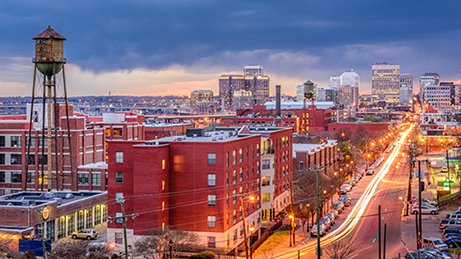Question Your World: What Could Cities of the Future Look Like?
Every now and then, it’s nice to look at the world around us and imagine what it could be like in the future! Let’s take a quick look at how some cities around the world, big and small, are using science and technology to enhance the quality of life for their citizens. The intersection of science, technology, and urban planning is responsible for many things we take for granted, like highways, power grids, sanitation services and beyond. As our population grows, so will our needs. This is why scientists are spending a lot of time asking today's big question: What could cities of the future look like?
Since we have not quite figured out how to harness time travel, we're going to need to reference cutting-edge designs and use our imaginations to see how these ideas could turn into reality. There are too many awesome new achievements in science to explore every single one, but here's a collection of some really interesting ideas that cities are trying right now which could potentially become common everywhere in the future.
Issues ranging from climate change to psychology of citizens and mass transit's impact on the economy are all factored in when approaching urban planning. Currently there are 7.6 billion people on Earth and rising. Providing food, shelter, education, entertainment, safety, and transportation to everyone is a very huge issue that scientists and urban planners face every single day.

Image credit: Getty Images
Here are some cool ideas that planners and scientists are trying out right now to help enhance the quality of life for their many citizens.
Los Angeles is home to over 13 million people and at night, they all need lights! LA is retrofitting 4,500 miles of old street lamps with new LED lights. Looking ahead, city planners also want to be able to control the lighting to make it brighter when pedestrians are walking and dim when there isn’t any traffic to save on costs and minimize light pollution.
This is a big issue because light pollution is not only causing health problems for many species that we rely on for ecological services, but it's starting to impact human health as well. These ideas could help humanity during darker times without negatively impacting entire communities of humans or ecosystems full of species.
Way over in the Netherlands, the small town of Eindhoven is literally taking things to the next level for bike commuters. In an effort to increase bike riders and their safety, Eindhoven has constructed elevated bike lanes so bikers can ride safely above the traffic! Heat-trapping gases from vehicles are adding to our planet’s record-breaking rising temperatures. Simultaneously, many humans who live in urban areas are unhealthy, and aerobic exercise like biking riding could not only lower heat-trapping gas emissions but could also help boost a region's health standards.
Some places face traffic problems, but others face sanitation issues. Mecca in Saudi Arabia has invested $20 billion to address their waste problem. A series of pneumatic tubes can now take trash from street level cans through a network of tubes at 40 mph and ultimately deliver trash to a processing plant over a mile away! Sanitation is a major issue in places experiencing population booms. If successful, this technology could revolutionize how the growing number of our planet's megacities approach sanitation standards.
Lastly, Medellin in Columbia is using design principles to improve the psychological outlook of the city’s poorer residents. Citizens with higher incomes are more able to enjoy the activities they desire, such as dining out and taking vacations, and certainly they are able to enjoy the city they live in and the many amenities it has to offer. The inequality of wealth has created barriers that make it difficult for lower income citizens to enjoy these amenities. Not anymore! The government in Medellin has decided to invest in the happiness of its people and ensure a system by which lower income residents have access to public spaces and mass transit. Beautifully designed cable cars connect poorer neighborhoods to the city center and link up at newly constructed city parks so everyone feels like they’re a part of the city, regardless of income.
While Rosie the robot is still a ways away, thanks to science and technology, we can get a glimpse of the future by looking at these innovative urban design plans and of course rumbas, people. The future is upon us!

